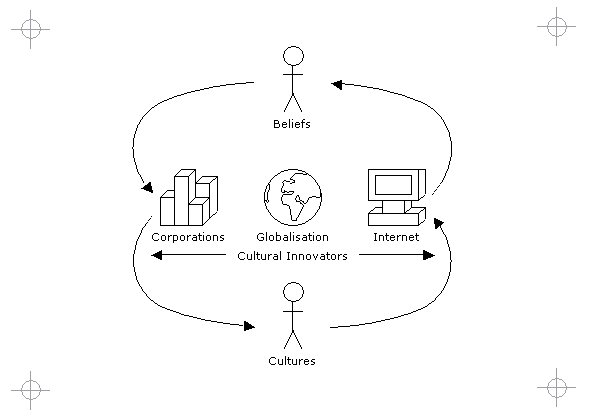We believe in the use of technology, social networking and the evolving web to build communities of pratice. Multinational corporations and the internet are cultural innovators just as cities were during in the urban revolution - accelerating the convergence of natural beliefs and natural science. Cultures and beliefs in organisational theory, design and construction are just as relevant today as it has been since early civilisation.

Because of global connectivity through the Internet, Extranets and Intranets, there is a greater likelihood that practices will have to change. By considering values, principles and practices it is possible for converging cultures to adhere to common values and principles even where practices may differ.
One of the driving forces which motivated Gropius in his establishment of the Bauhaus school of art was "the unification of all creative activities." He sought to break down the separation between painting, sculpture, architecture and other crafts. "All are one" was his declaration. The vehicle for unification was the workshop and the building was its central point of focus.
The workshop represents a "place" where all creative activities are undertaken together - a place of learning and activity. During the design and construction process, workshops or the center of activity can be used to unify all architecture intensive disciplines and activities. By viewing all members of the team as craftsmen, the hierarchies and separations that hamper team work can be replaced with collaboration. The workshop also represents the center of learning and where knowledge sharing is fostered.